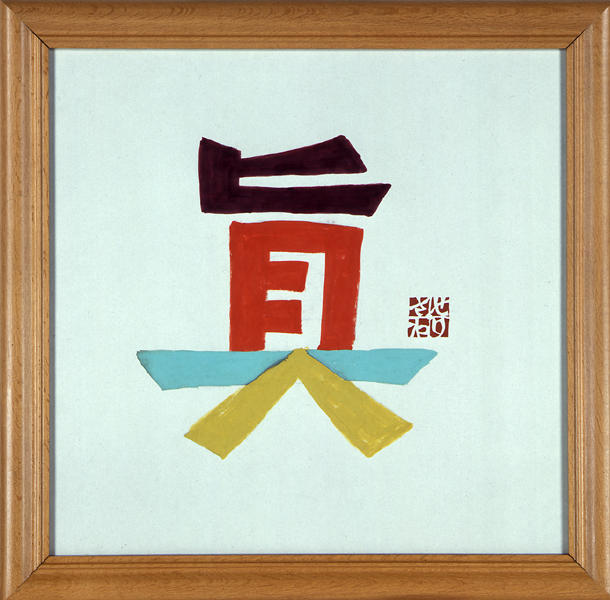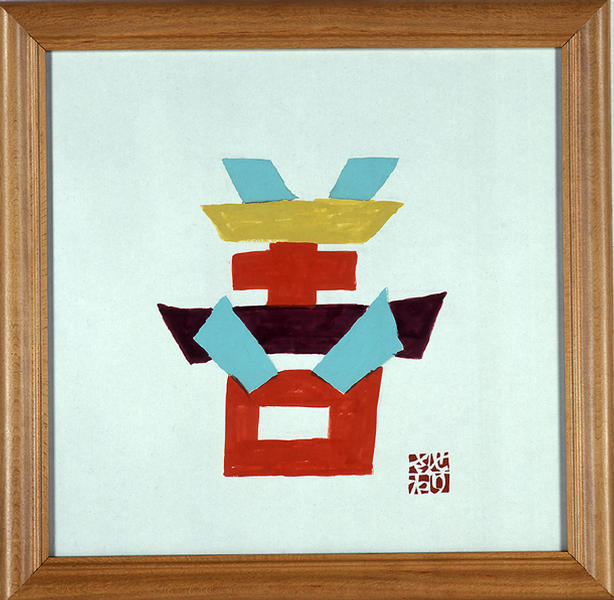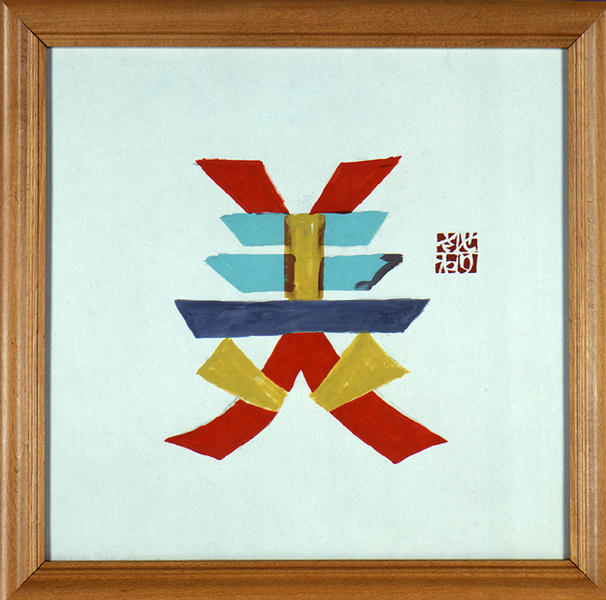真・善・美(芹沢銈介作)
- 20c
- 紙本著色
- H-91.5 D-8 W-94
解説(春の玉手箱)
芹沢けい介(一八九五~一九八四)は、静岡県出身の工芸作家。琉球紅型の美に傾倒し、やがて独自の型染を完成、独特の装飾文字も考案するなど染色・装丁・挿画等多方面で活躍した。柳宗悦らによる民芸運動の一翼を担い、昭和三一年型絵染の重要無形文化財保持者(人間国宝)となる。静岡県登呂遺跡内に静岡市立芹澤けい介美術館がある。
この文字は昭和五八年(一九八三)神慈秀明会の神殿・教祖殿(ミノル・ヤマサキ設計)落慶に際し、直筆で揮毫されたもの。真・善・美とは、知性・意志・感性それぞれに応ずる超絶的対象を指す。このように躊躇なく引かれた色線同士が交わり、文字となってそれぞれの意味を持ち、並べられて熟語となり見るものに語り掛けてくる様は、芹沢の文字が自然の造形から生み出されたことを示唆するものである。柳等が興した民芸運動思想の根源的な美しさを宿している。
Catalogue Entry
Serizawa Keisuke (1895‐1984) was a craftsman born in Shizuoka prefecture. Fascinated by the aesthetics of Ryukyu Island kogata stencil dying, Serizawa set out on a multi‐dimensional artistic career, developing his own unique stencil dye forms, his own decorative lettering style and many other achievements in dyestuffs, bookbinding and book illustrations. He was a member of the Mingei folk craft movement begun by Yanagi Sosetsu and others, and in 1956 he was named a Living National Treasures for his stencil‐dyed pictures. There is a Shizuoka city Keisuke Serizawa Museum located at the Toro historical site in Shizuoka prefecture.
These directly brushed characters were created for presentation on the occasion of the opening of the Shinji Shumeikai's new sanctuary and Meishusama Hall (architect, Minoru Yamasaki). The three terms Truth, Goodness and Beauty are a superb summation of knowledge, faith and the emotions. The unwavering lines of color mutually mingle to form meaningful characters, at the same time that the meaning of this set phrase seems to emerge directly from the natural forms of Serizawa's characters. They seem to be embodiments of the philosophy of Yanagi's Mingei movement's.


